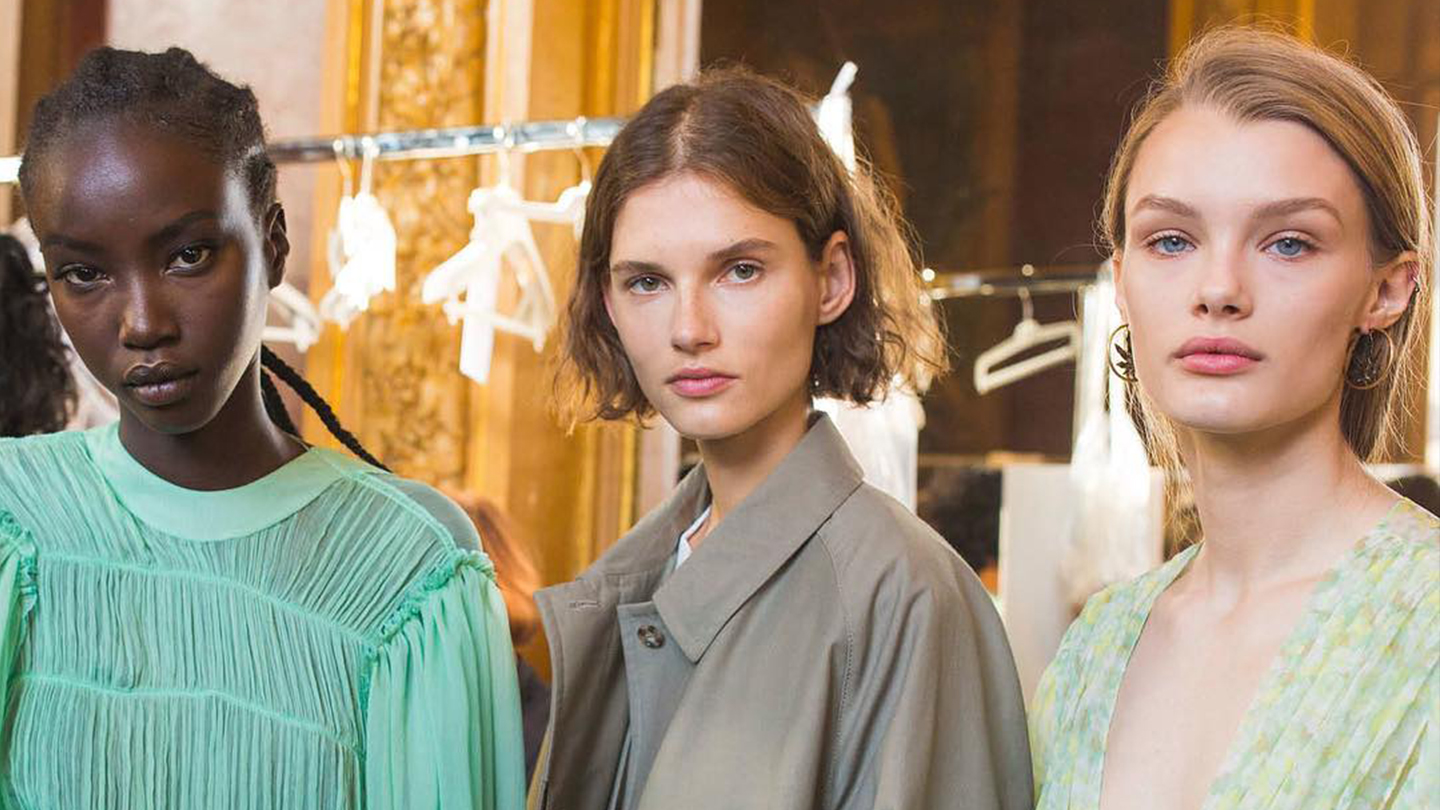In terms of beauty, the spring/summer 19 runways told a tale of two halves. Every face that was covered in bright colours was met with another freshly cleansed, bare complexion. For every make-up artist that dipped into pots of bright pigment and glued the bounty of a Hobby Craft haul onto faces, there was another armed with a solitary jar of moisturiser. Creativity undoubtedly has its place in our beauty arsenal, but it was the natural beauty movement that felt most monumental this season.
Granted, you’ll have heard the term natural beauty countless times before, but this season’s iteration had a new, more empowering agenda. Where once no-make-up make-up was simply a misnomer for what was, in reality, a complexion caked in concealer and powdered to within an inch of its life to give the illusion of innately flawless skin, this season’s approach to natural beauty felt a whole lot more natural. Rather than disguising dark circles, make-up artists celebrated them; instead of plastering over spots, they embraced them. It felt like a celebration of human skin, in all of its raw and real glory.
The new natural frontier manifested in many forms on the runways, and interestingly, it was many of the big fashion houses that opted for a barely there make-up look to present their collections. At Dior, Peter Phillips made a point of skipping the products so often used to sculpt ridiculously angular bone structures. “No highlighter or contour marks a return to naturalism,” he mused backstage.
A handful of Valentino’s models did indeed wear crystal-studded waves of colour over their eyelids, but Pat McGrath gave the rest of the line up little more than a pat of lip balm. She took a similar approach at Paco Rabanne, using a mere dab of highlighter to prep the models’ faces. At Miu Miu, Stella McCartney, Jil Sander and Isabel Marant make-up artists were briefed to present bare complexions, too.
Does this mean we’re entering a new phase of beauty authenticity? It would make sense, when you consider the wider societal shift towards honesty and transparency. “Mainstream culture has always taught us to celebrate perfection, but in the social media age — in which our peers are the new style icons — people increasingly yearn for something more human and authentic,” explains Victoria Buchanan, senior strategic researcher at the Future Laboratory. From food choices to holiday destinations the untampered is champion, and this urge for the authentic has extended to our faces, too.
“A new raft of designers are celebrating human imperfection and showing models as they are, even going as far as to portray the beauty of imperfections through untouched and visible blemishes, dark circles and acne,” Buchanan adds. “It’s about celebrating flaws and defects as a sign of individuality.” Our disdain for overly filtered and Face-tuned photos has been bubbling up for some time now, but it seems we might finally be seeing the back of face fakery.
MAC’s director of make-up artistry, Terry Barber, has noticed the shift, too, noting that fashion houses are feeling the pressure to reinvent ingrained beauty ideals. “Designers are now very conscious about getting their message right, especially through beauty,” he says. “Spring/summer 19 was about peeling away the layers of gratuitous coverage and heavy correction and working with the subtlest tweaks. Make-up’s job has become not to ‘fix’ but to reveal attitudes by doing very little. It almost feels quite punk to portray such a high level of purity. It’s about feeling good about yourself.”
“I think make-up trends are cyclical and reactionary,” adds make-up artist Andrew Gallimore. “So when the market (or our eyes) are flooded with images and videos of hyperreal, perfected flawlessness, it’s only natural to get a slight knee-jerk reaction and want to do the opposite and therefore have skin look more real and embrace its imperfections.”
Of course, under the watchful eye of beauty brand sponsors, it’s rare for a make-up artist to leave faces completely bare — their products won’t sell themselves — but it definitely feels like a departure from the pretence of past seasons. For starters, we’re no longer being sold the idea that these blemish-less faces are simply the result of a strategic spritzing of Caudalie face mist. Nor are we told that we need to mask every inch of our face to achieve that romanticised idea of true, life-affirming, star-aligning beauty.
But the real crux of this paradigm shift is the idea that a face devoid of all human nuance is no longer the ultimate beauty ideal. If beauty’s new mood is trying to tell us anything, it’s that real, authentic skin — however it comes — is in.

